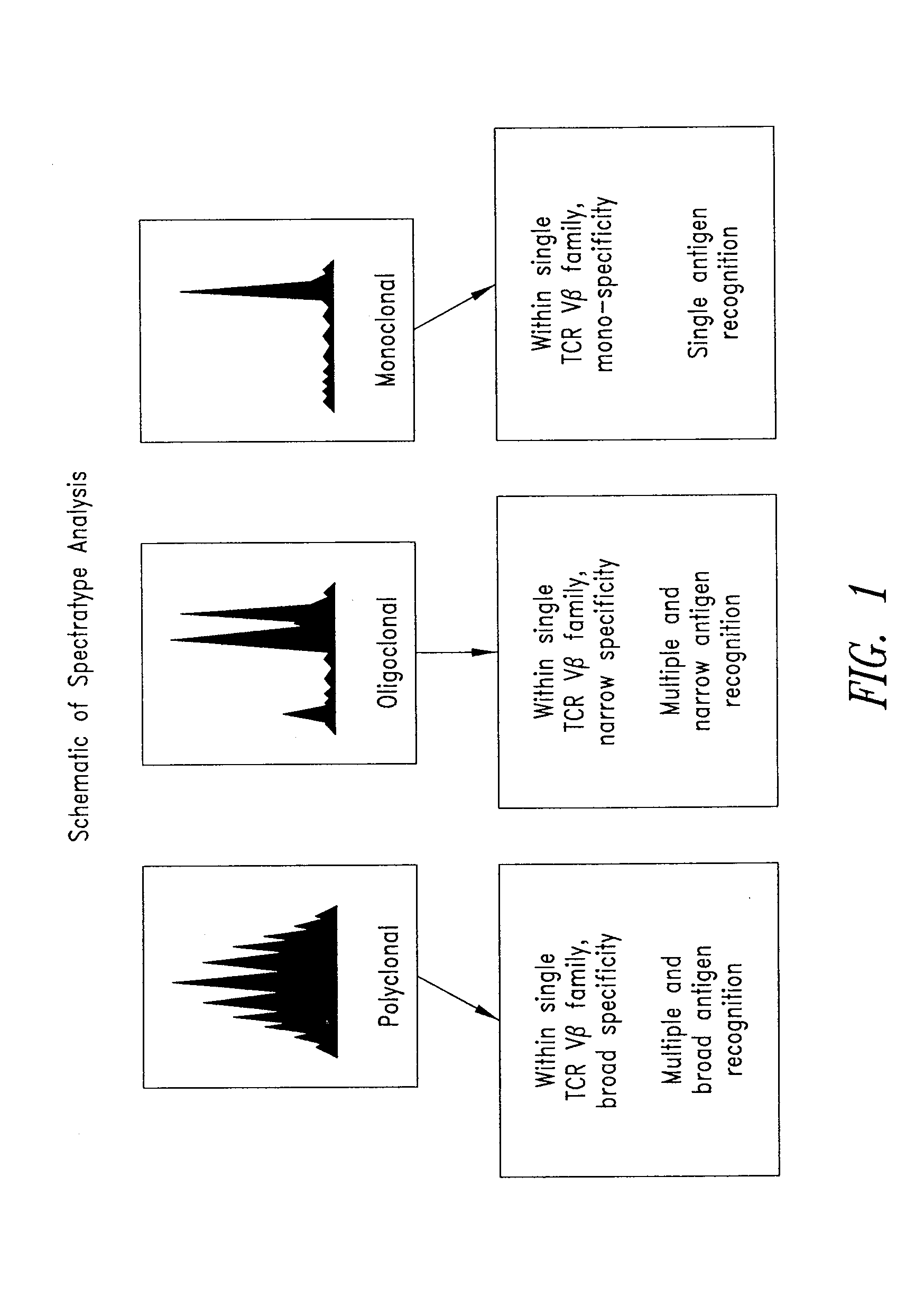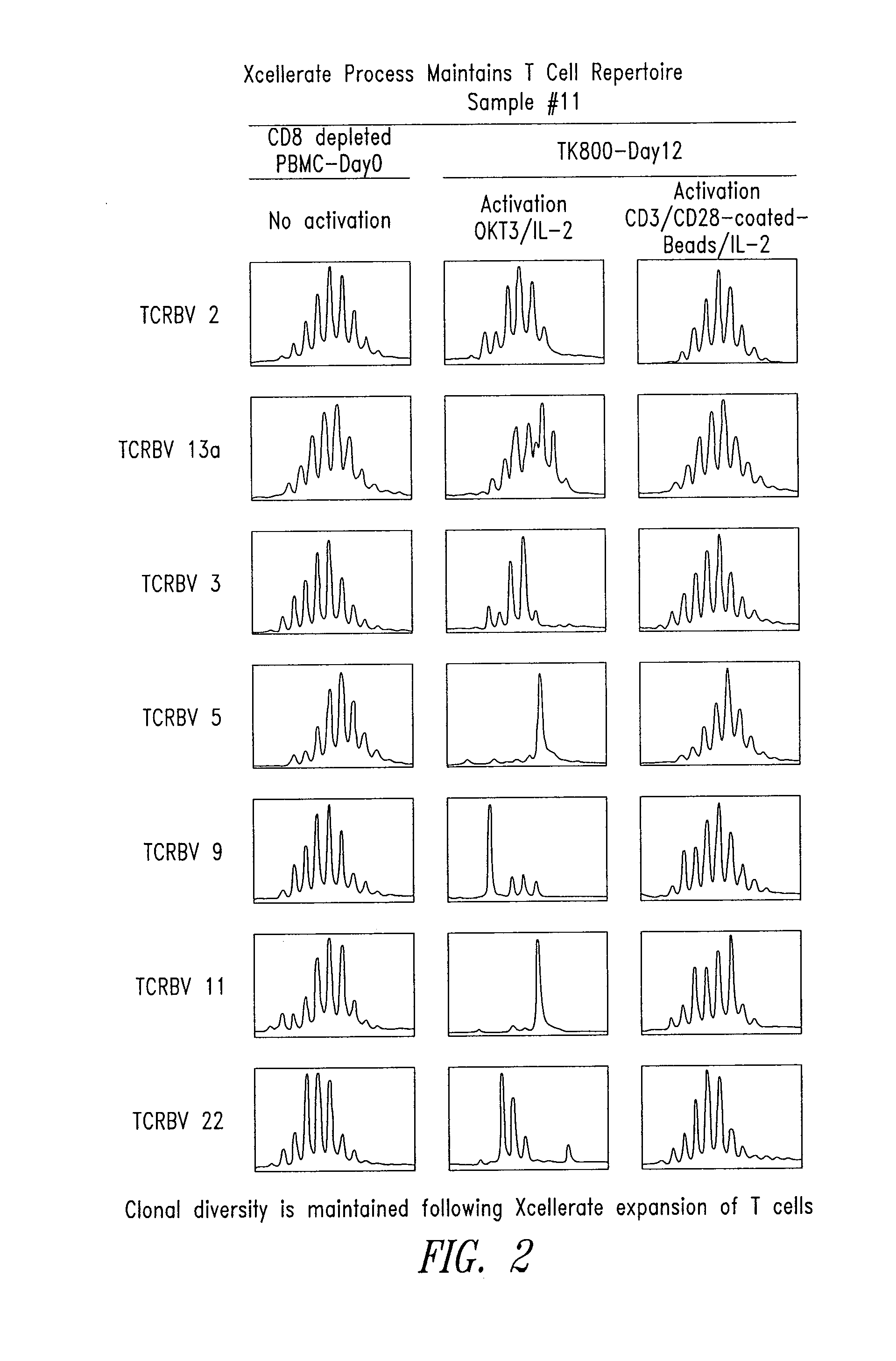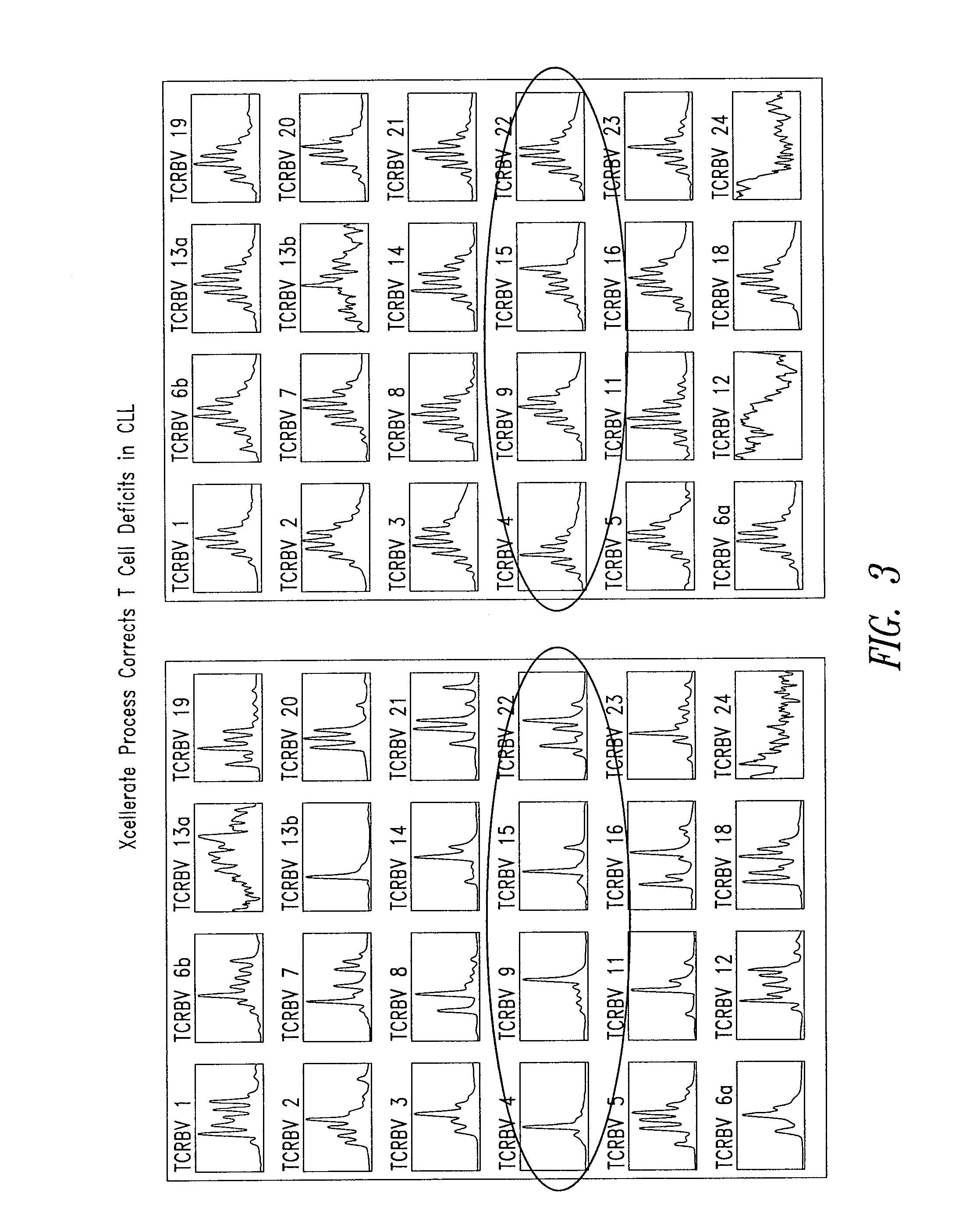Compositions and methods for restoring immune responsiveness in patients with immunological defects
a technology of immunological defects and compositions, applied in the field of compositions and methods for restoring immune responsiveness in patients with immunological defects, can solve the problems of increased risk of infection and cancer, difficulty in regenerating accessory cells, and reduced ability, so as to restore the polyclonality of tcr expression and restore immune responsiveness in the patien
- Summary
- Abstract
- Description
- Claims
- Application Information
AI Technical Summary
Benefits of technology
Problems solved by technology
Method used
Image
Examples
example 1
T Cell Stimulation
[0148]In certain experiments described herein, the process referred to as XCELLERATE I™ was utilized. In brief, in this process, the XCELLERATED T cells are manufactured from a peripheral blood mononuclear cell (PBMC) apheresis product. After collection from the patient at the clinical site, the PBMC apheresis are washed and then incubated with “uncoated” DYNABEADS® M-450 Epoxy. During this time phagocytic cells such as monocytes ingest the beads. After the incubation, the cells and beads are processed over a MaxSep Magnetic Separator in order to remove the beads and any monocytic / phagocytic cells that are attached to the beads. Following this monocyte-depletion step, a volume containing a total of 5×108 CD3+ T cells is taken and set-up with 1.5×109 DYNABEADS® M-450 CD3 / CD28 T Cell Expander to initiate the XCELLERATE™ process (approx. 3:1 beads to T cells). The mixture of cells and DYNABEADS® M-450 CD3 / CD28 T Cell Expander are then incubated at 37° C., 5% CO2 for a...
example 2
Spectratype Analysis of T Cells
[0159]This example describes the use of spectratype analysis to determine the clonality of the expressed TCRs in T cell populations before and after stimulation using the XCELLERATE™ method. Described herein is the analysis of rearranged Vβ genes. The skilled artisan will readily recognize that the Vα, Vγ, and Vδ TCR genes may be analyzed in a similar manner.
[0160]Spectratype analysis was carried out essentially as described in U.S. Pat. No. 5,837,447, and C. Ferrand, et al (C. Ferrand, E. Robinet, Emmanuel Contassot, J-M Certoux, Annick Lim, P. Herve, and P. Tiberghien. Human Gene Therapy 11:1151-1164, 2000). Briefly, starting cell suspensions were from PBMCs, cell lines, PBMC depleted of CD8+ cells, and / or XCELLERATED T cells. Total RNA was isolated using Trizol (Gibco-BRL) and 2 ug were reverse transcribed with random hexamers (Pharmacia Biotech) in a standard cDNA synthesis reaction.
[0161]Each TCR BV segment was amplified with 1 of the 24 TCR BV su...
example 3
XCELLERATE Process Improves Lymphocyte Recovery in Transplanted Myeloma Patients
[0173]This example describes data from a preliminary clinical trial in a patient with multiple myeloma indicating that XCELLERATED T cells improve the recovery in transplanted myeloma patients.
[0174]The XCELLERATE II process was carried out essentially as described in Example 1 on leukapheresed cells collected from the patient following registration in the clinical trial and prior to stem cell collection. XCELLERATED T cells were infused on day +3 following stem cell infusion. As shown in FIG. 6, the XCELLERATE™ process improves lymphocyte recovery in a transplanted myeloma patient. Additionally, both CD4 and CD8 T cells increased after XCELLERATED T cell infusion.
[0175]Thus, this clinical data shows that XCELLERATED T cells improve the recovery in transplanted myeloma patients and support the notion that the T cell compositions described herein can be infused into donors to provide broad and potent immu...
PUM
| Property | Measurement | Unit |
|---|---|---|
| time period | aaaaa | aaaaa |
| time period | aaaaa | aaaaa |
| incubation time period | aaaaa | aaaaa |
Abstract
Description
Claims
Application Information
 Login to View More
Login to View More - R&D
- Intellectual Property
- Life Sciences
- Materials
- Tech Scout
- Unparalleled Data Quality
- Higher Quality Content
- 60% Fewer Hallucinations
Browse by: Latest US Patents, China's latest patents, Technical Efficacy Thesaurus, Application Domain, Technology Topic, Popular Technical Reports.
© 2025 PatSnap. All rights reserved.Legal|Privacy policy|Modern Slavery Act Transparency Statement|Sitemap|About US| Contact US: help@patsnap.com



